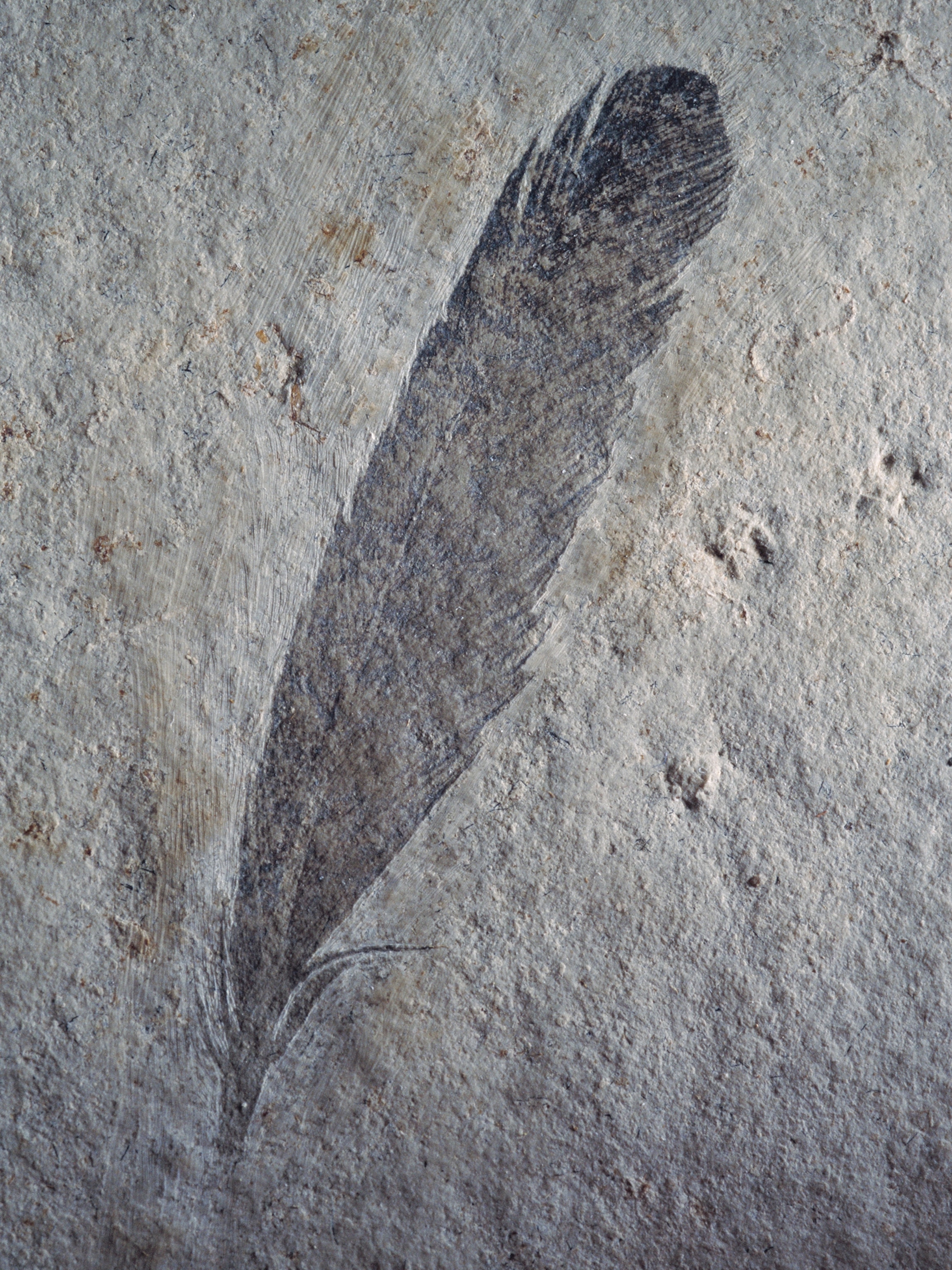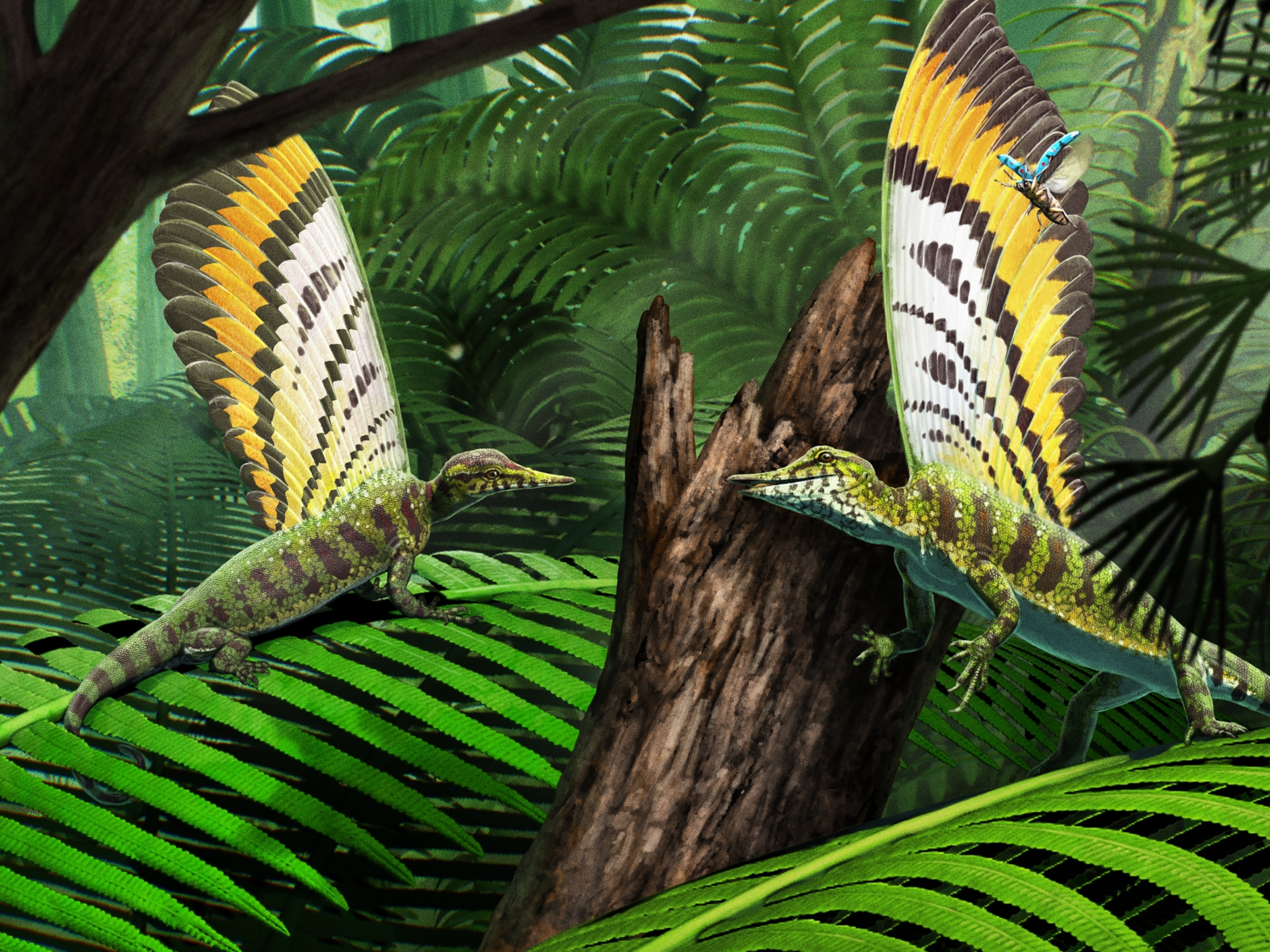
New Shades for a Dinobird's Feathers
Archaeopteryx's plumage had light and dark patterns that benefited the bird.
One of nature's oldest birds just got a feather makeover.
The Archaeopteryx, which lived around 150 million years ago and was a mixture of bird traits (notably feathers) and reptile traits (teeth, claws on its wings), was previously thought to have black feathers. But a new analysis of three Archaeopteryx fossils has revealed that the ancient bird's feathers were in fact light in color, with a dark edge and tips.
The distinct black-and-white patterns on the bird's plumage are comparable to the pigmentation of a magpie, said study co-author Roy Wogelius, a geochemist at the University of Manchester.
"This creature was actually doing very well in terms of evolutionary state. It already has a key adaptation that we see in many modern species of bird," said study leader and University of Manchester paleontologist Phil Manning, who is a National Geographic grantee.
Like modern-day birds, the Archaeopteryx would have benefited from the different shadings.
The scan found traces of copper that produced the dark tips of the bird's feather; copper has properties that can keep away bacteria that would otherwise fray wings. The copper also slowed the "microbial breakdown" of the fossil, Manning notes: "It's the reason the feather has been preserved for 150 million years to the point where we still see astounding resolution in the fossil." (Related quiz: Test your dinosaur IQ.)
Enlightened by a Scan
The study published yesterday (June 13) in the Journal of Analytical Atomic Spectrometry sheds new light on the feathers, literally, with an x-ray machine called the Stanford Synchrotron Radiation Lightsource (SSRL).
"This is remarkable. We are actually mapping elements which were built by that animal 150 million years ago," Manning said.
A 2012 study from researchers at Brown University determined that the same fossilized feather was black. But it analyzed only small parts of the specimen, said Uwe Bergmann, co-author of the new study and developer of the SSRL. (See "Feathered Dinosaur Had Black Wings?")
This new research ran complete scans of the fossilized feather and two additional Archaeopteryx fossils, showing the light and dark patterns.
What's Behind a Feather's Hue
The feathers of modern birds, meanwhile, owe their color to factors other than chemical traces.
For example, flamingos get their pink color from the shellfish they eat. The way light bounces off the feathers can also contribute to color.
So the ancient bird's environment most likely affected its hues. And while it may be impossible to figure out exactly what the true colors were, researchers will continue to examine the fossilized feathers to see if they offer information not only about the bird's habits, but also about the world in which the Archaeopteryx lived. (See "True-Color Dinosaur Revealed: First Full-Body Rendering.")
Follow Harmony Huskinson on Twitter.





